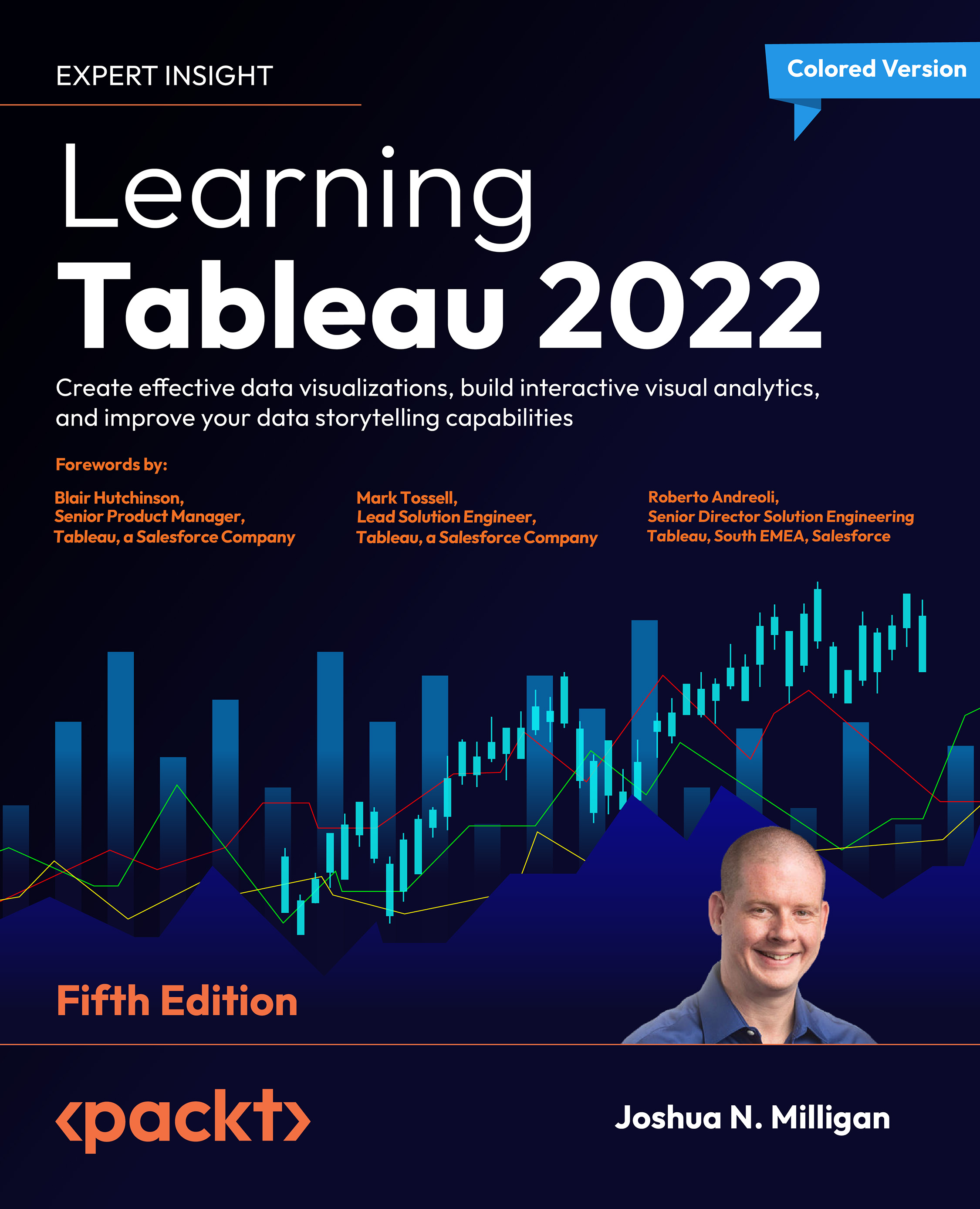We’ve covered quite a bit of ground in this chapter! You should now have a good grasp of when to use certain types of visualizations. The types of questions you ask about data will often lead you to a certain type of view. You’ve explored how to create these various types and how to extend basic visualizations using a variety of advanced techniques, such as calculated fields, jittering, multiple mark types, and dual axis. Along the way, we’ve also covered some details on how dates work in Tableau.
Hopefully, the examples of using calculations in this chapter have whet your appetite for learning more about creating calculated fields. The ability to create calculations in Tableau opens endless possibilities for extending the analysis of data, calculating results, customizing visualizations, and creating rich user interactivity. We’ll dive deep into calculations in the next two chapters to see how they work and what amazing things they can do.
...



 Free Chapter
Free Chapter
